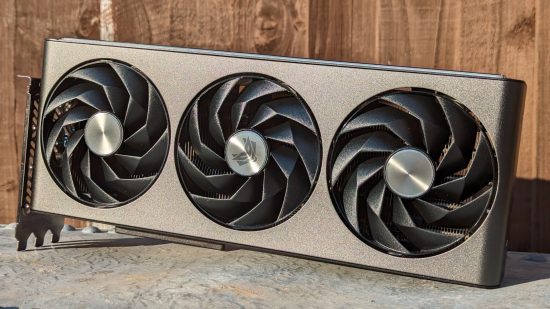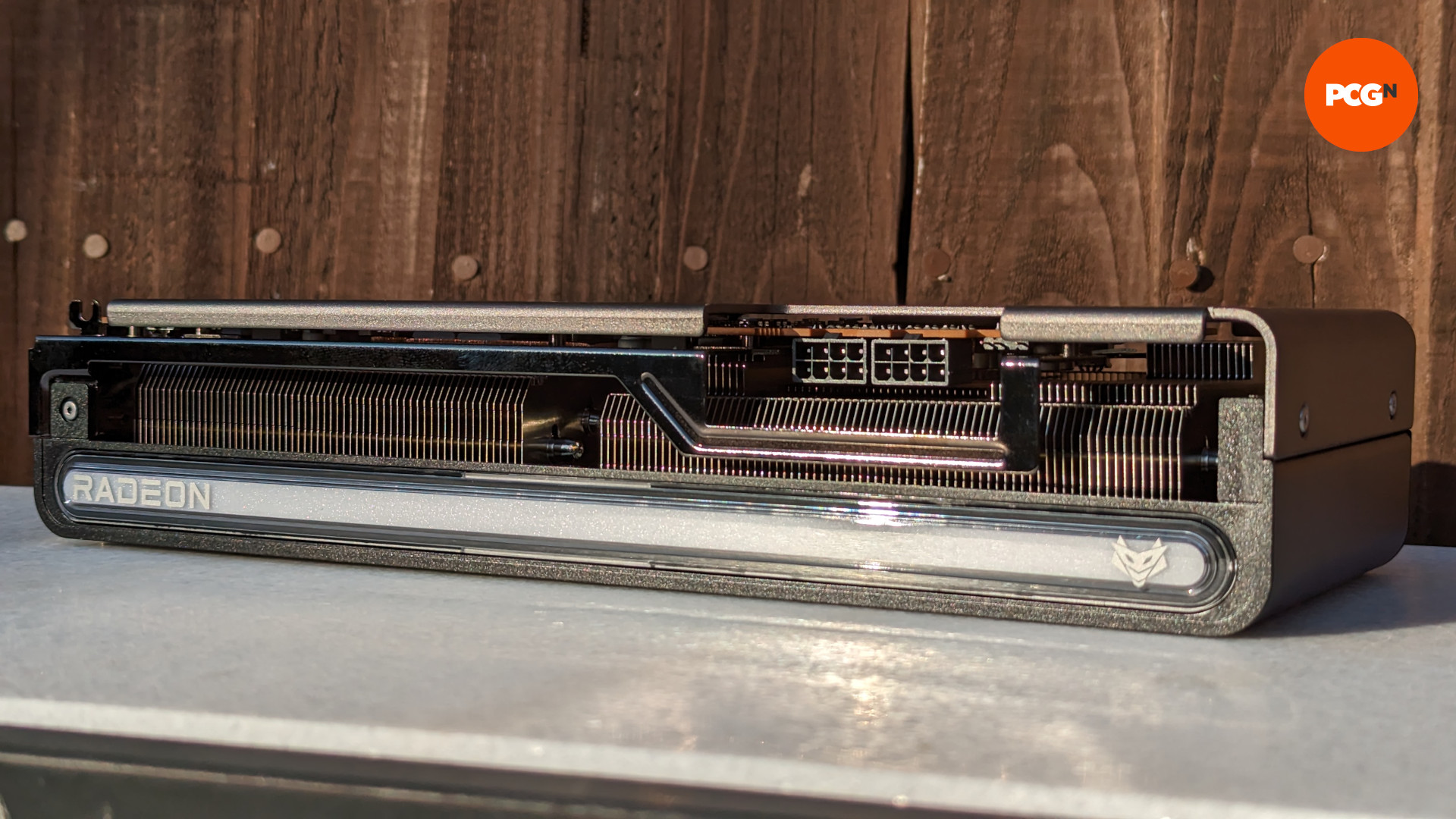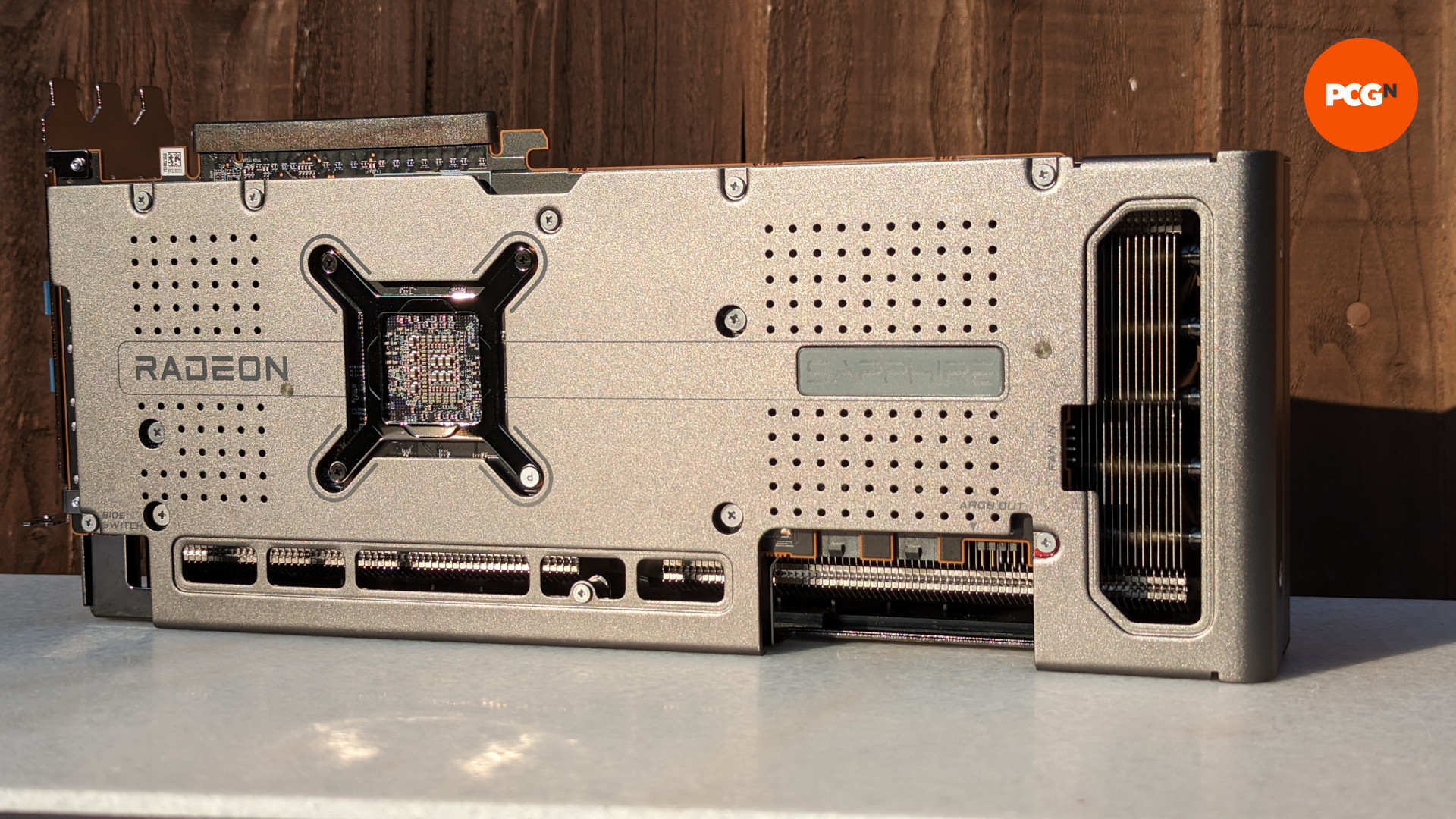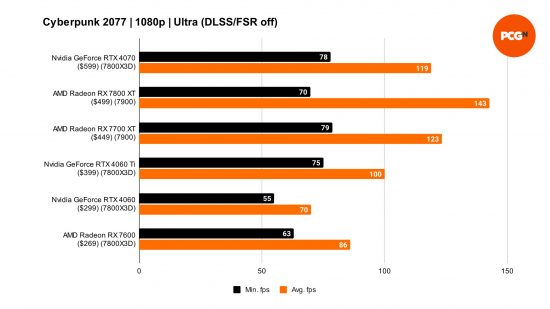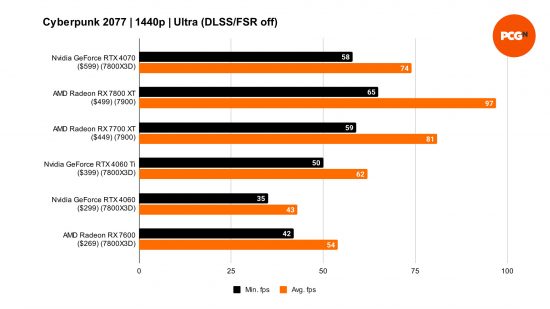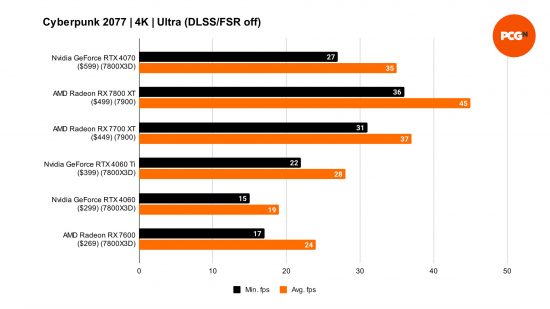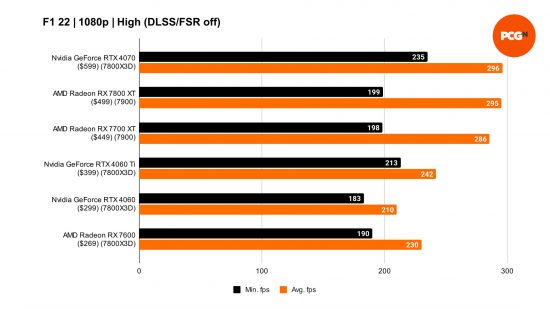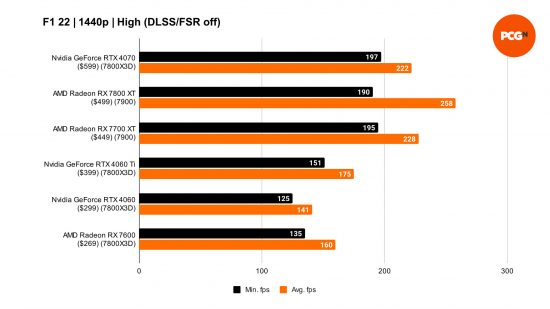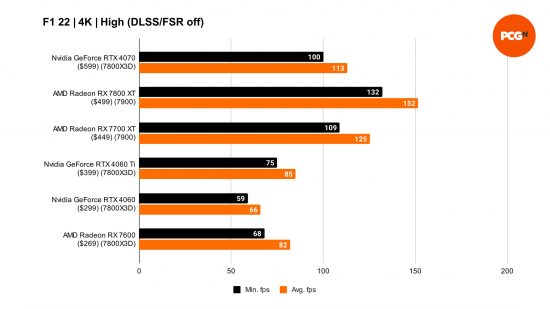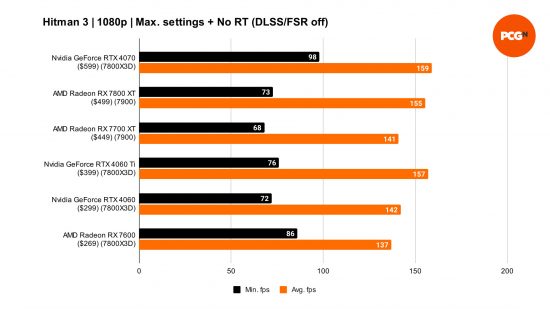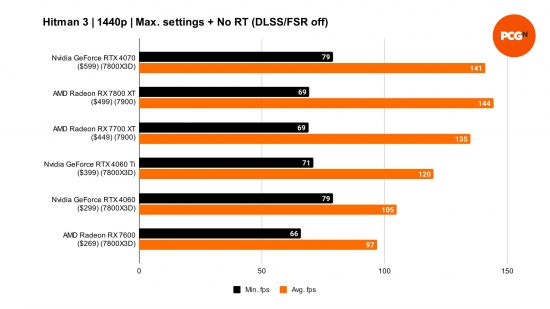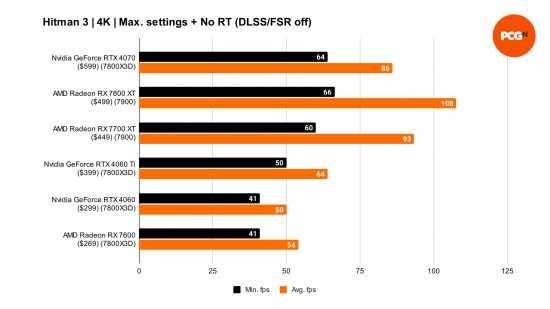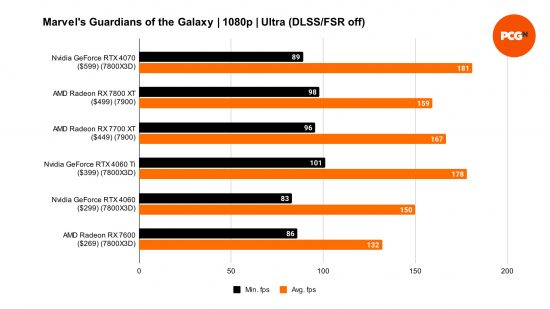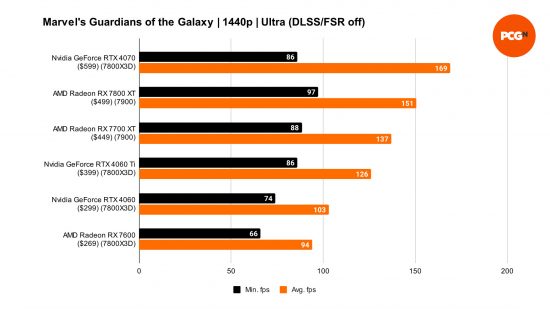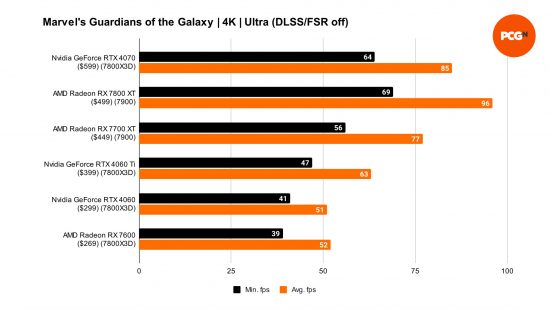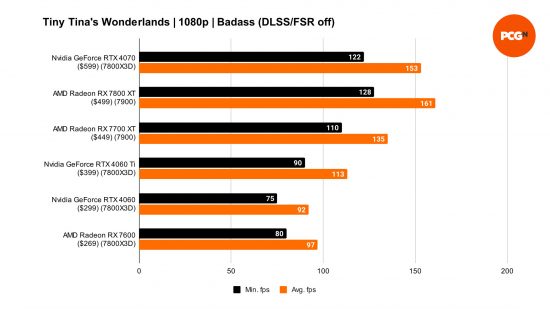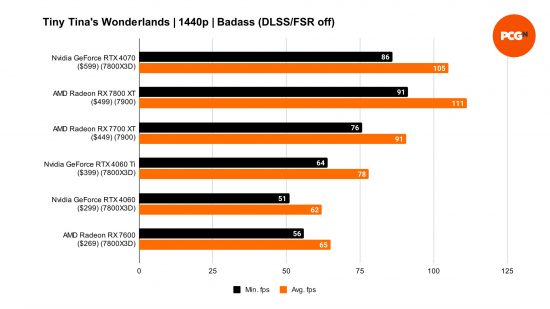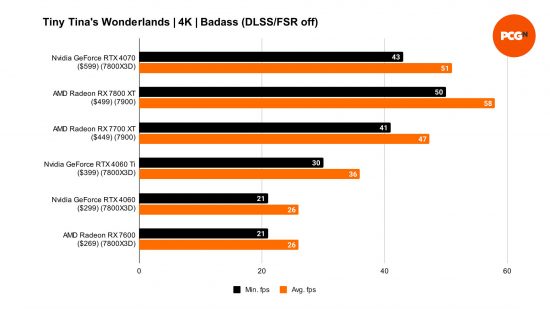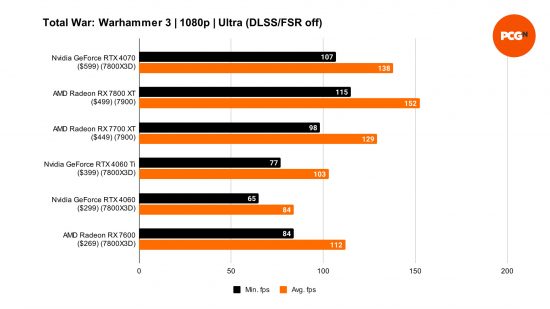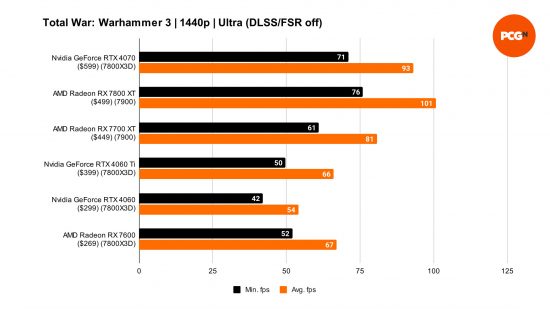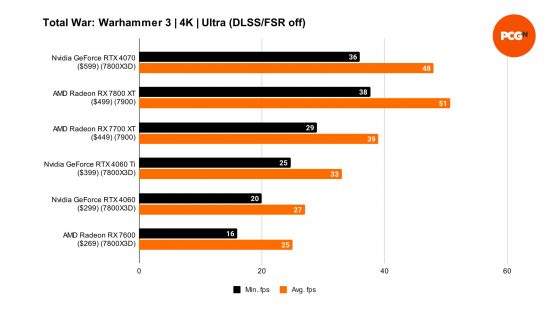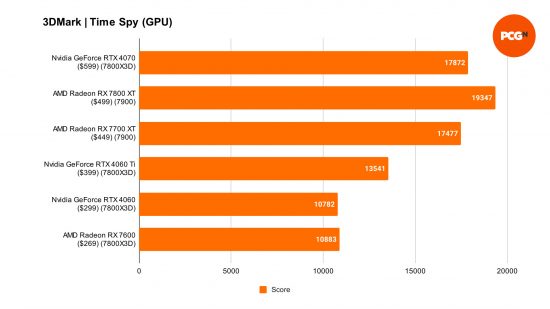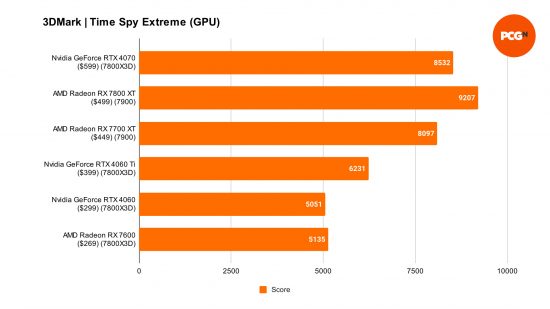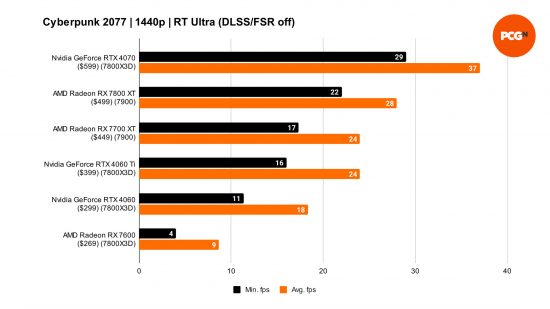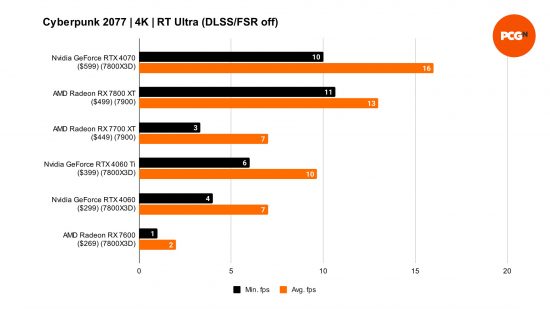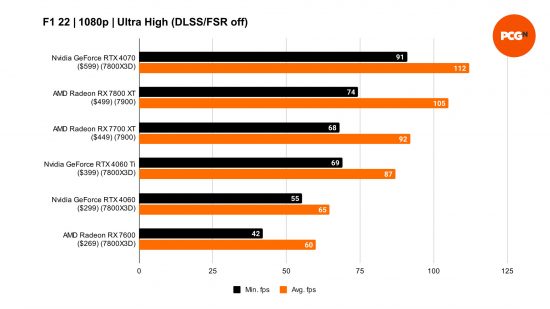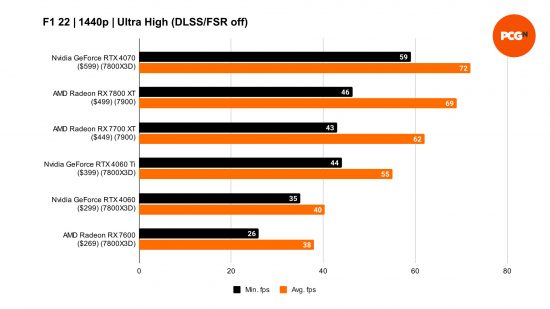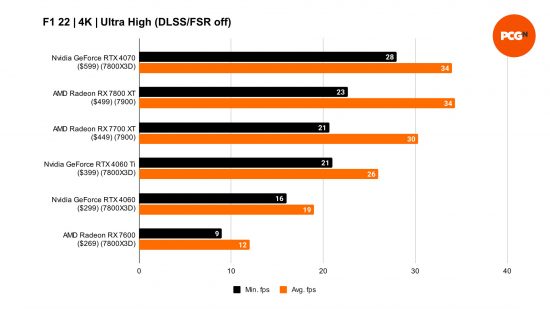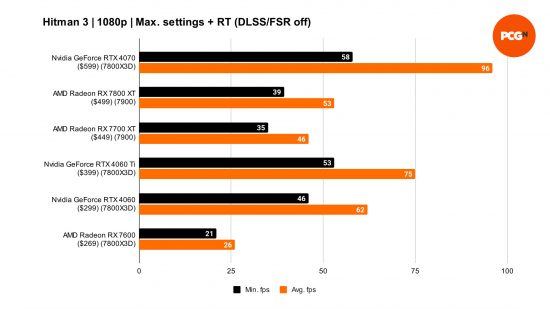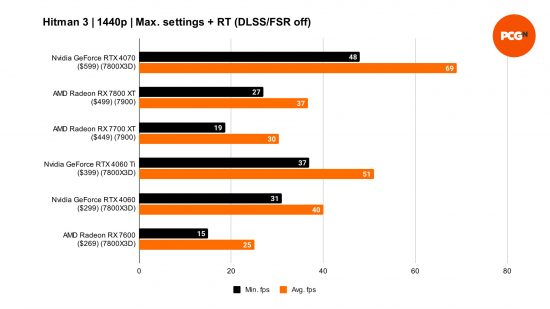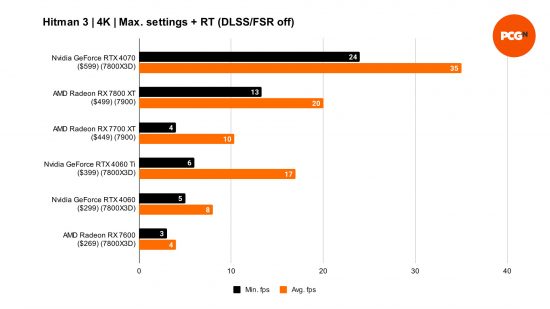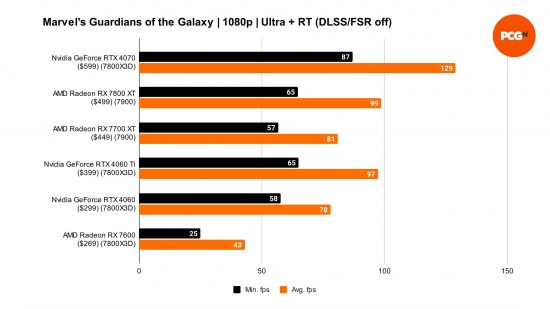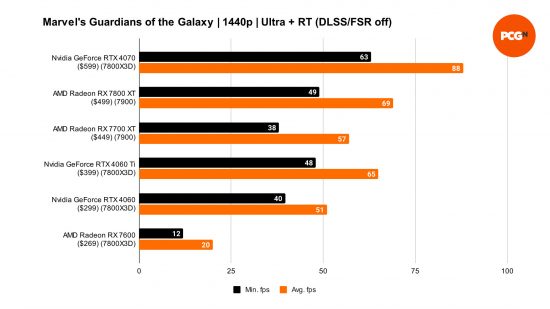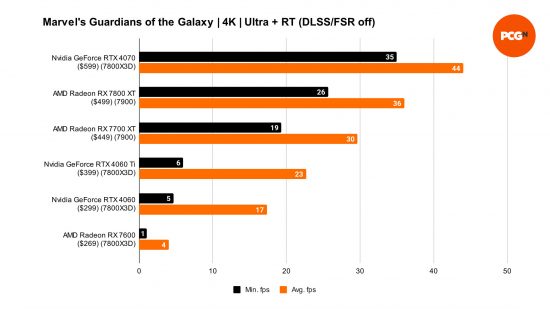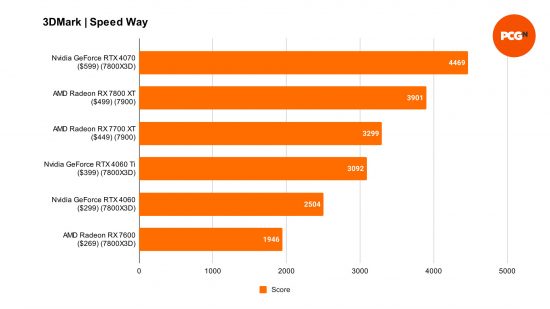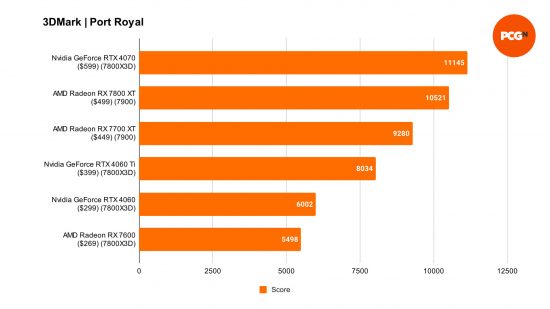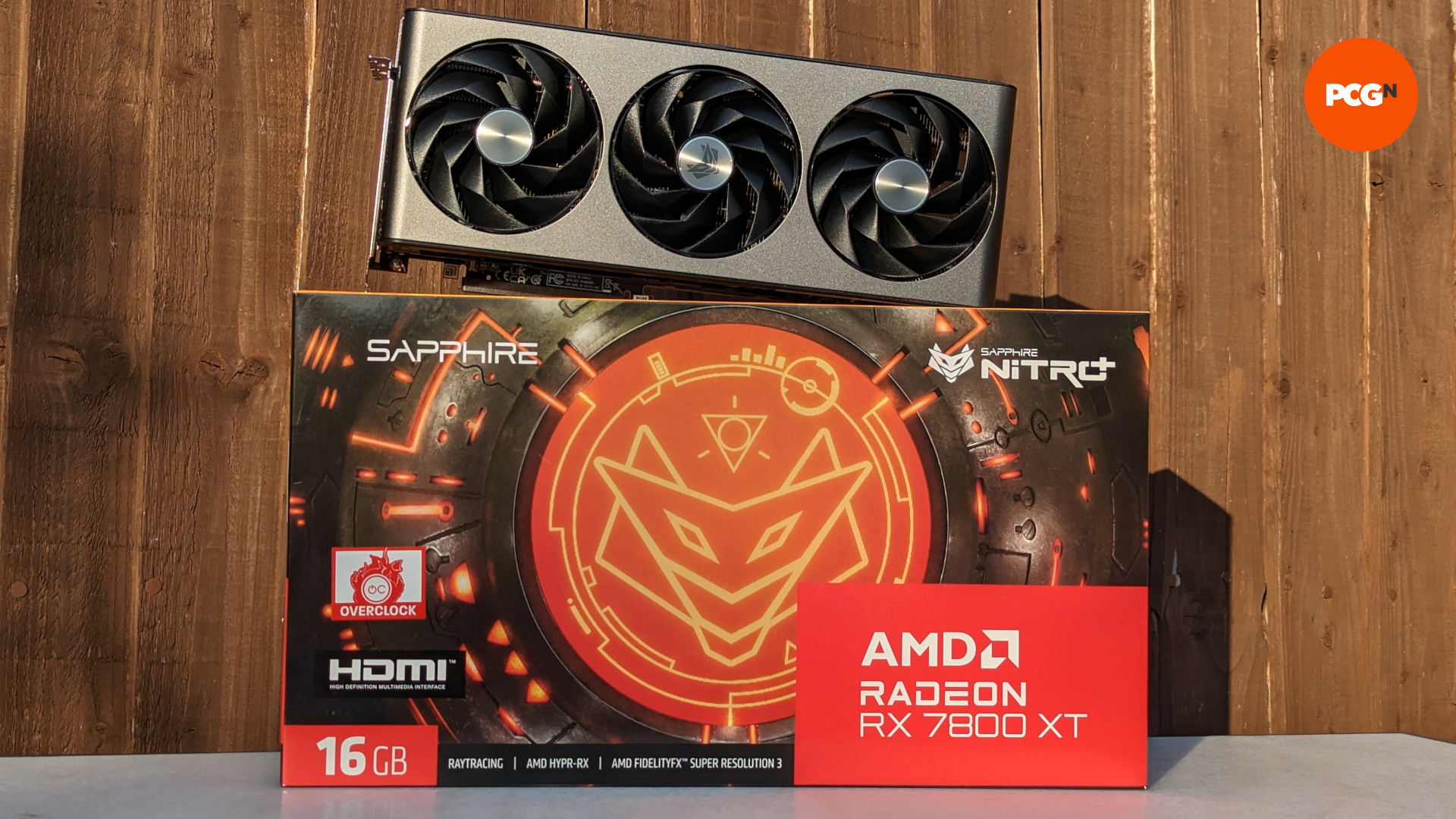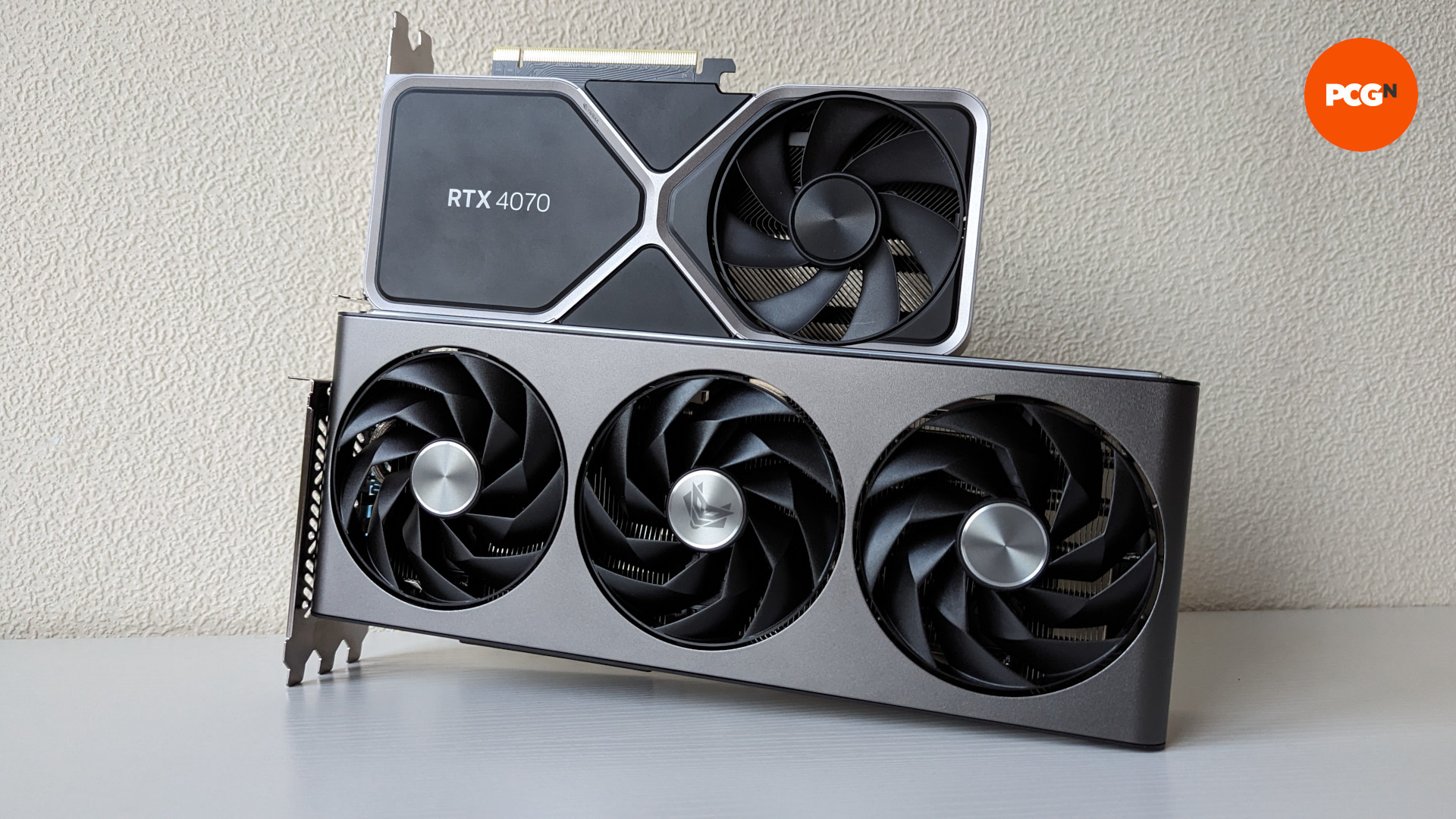Our Verdict
The AMD Radeon RX 7800 XT is the optimal choice for those looking to game at 1440p, with enough power to stretch to 4K too. Rasterized games prove to be its core strength, and while it's not the best at ray tracing, it's still good enough there too.
- Unparalleled memory bandwidth for $500
- Smashes the GeForce RTX 4070 in rasterized scenarios
- Better value than the Radeon RX 7700 XT
- Large ray tracing performance gaps vs the RTX 4070
- Still no sign of FSR 3 frame generation
- Some generational downgrades
The AMD Radeon RX 7800 XT has been a long time coming, but it’s mostly been worth the wait. Much of this graphics card leaves its direct competition to look somewhat questionable by comparison, particularly when it comes to rasterized performance and memory bandwidth. However, there are a few areas where this new AMD GPU falters, stopping it from outright dominating the midrange price category.
For the majority of the past week, I’ve had the RX 7800 XT purring away in the PCGamesN test bench, subjecting it to our tried and tested suite of graphics card benchmarks and more. I’ve also spent just as much time with its closely priced sibling, the AMD Radeon RX 7700 XT, and examined how it holds up versus its competition. While I’m certain there’s a clear winner between the two new team red GPUs, things are more complicated when taking other options into account.
AMD Radeon RX 7800 XT specs
Falling in rank behind its more expensive and powerful siblings, the AMD Radeon RX 7800 XT specs are more befitting of its price point than its name. This is to say that it’s a well-equipped pixel pusher for $499, but AMD has seemingly moved the goalposts for what makes an 800-class GPU when appraising through a generational lens.
The 7800 XT features the full might of the Navi 32 GPU, complete with 3,840 stream processors and 60 second-generation ray accelerators housed in a 60-compute unit configuration. Naturally, these specifications are less powerful than the likes of the Radeon RX 7900 XT, but this is also oddly true compared to the previous generation Radeon RX 6800 XT too.
To be clear, comparing the 7800 XT to the 6800 XT isn’t an apples-to-apples comparison, as each graphics card is built on a different architecture (RDNA 3 vs RDNA 2). However, it’s clear to me that the addition of the Radeon RX 7900 XTX to the company’s current lineup has shifted where the 800-class card sits hierarchically. Thankfully, it appears that AMD is somewhat conscious of this, given the $150 price difference between the two GPUs.
| AMD Radeon RX 7800 XT | AMD Radeon RX 6800 XT | |
| GPU | Navi 32 (RDNA 3) | Navi 21 (RDNA 2) |
| Stream processors | 3,840 | 4,608 |
| Compute units (CUs) | 60 | 72 |
| Ray accelerators | 60 | 72 |
| Game clock | 2,124MHz (2.12GHz) | 2,015MHz (2.02GHz) |
| Boost clock | Up to 2,430MHz (2.43GHz) | Up to 2,250MHz (2.25GHz) |
| VRAM | 16GB GDDR6 | 16GB GDDR6 |
| Memory bus width | 256-bit | 256-bit |
| TBP | 263W | 300W |
| MSRP | $499 | $649 |
Thankfully, the 7800 XT retains the same 16GB of GDDR6 VRAM on a 256-bit bus that made its predecessor great, albeit with a higher memory clock for greater bandwidth. It also boasts several improvements too, including faster game and boost clock speeds, as well as better efficiency as demonstrated by its lower TBP.
All in all, compared to the 7700 XT and its closest Nvidia competitors, the GeForce RTX 4070 and both flavors of the RTX 4060 Ti, the RX 7800 XT appears the most robust of the lot on paper. This quality translates in some respects when it comes to frame rates too, as is evident in the benchmark results further on in this review.
The Sapphire Nitro+ model sample I’m using pushes the 7800 XT that much further, with 120-130MHz increases to boost and game clocks. The board partner reckons this increases performance by 3.5% on average versus the stock card, but it does come at the price of increased power draw at 288W.
AMD Radeon RX 7800 XT benchmarks
Before we get into our AMD Radeon RX 7800 XT benchmarks, I must highlight that I was unable to test the GPU with the AMD Ryzen 7 7800X3D, as I have in all our other GPU reviews.
In its place, I’ve used the AMD Ryzen 9 7900, which should provide comparable frame rates at 1440p and 4K but may not be indicative of this card’s performance ceiling at 1080p. We’ll aim to update our findings once we’re able to retest the graphics card with the 7800X3D.
The following AMD Radeon RX 7800 XT benchmarks contain frame rate data for native 1080p, 1440p, and 4K resolutions. In my testing, I’ve recorded metrics using the highest quality preset for each game, toggling between ray tracing and rasterization. Each benchmark was run three times to produce an average result.
Here are the specs of my test system:
- GPU: Sapphire Nitro Radeon RX 7800 XT
- Driver: Adrenalin 23.20.01.05
- OS: Windows 11 Pro 22H2 (22621.2134)
- Motherboard: Asus TUF Gaming X670E-Plus (BIOS version 1636)
- CPU: AMD Ryzen 9 7900
- RAM: Corsair Vengeance 32GB (2 x 16GB) DDR5 6,000MHz
- SSD: WD_Black SN850X 1TB
- PSU: Corsair RMx SHIFT Series 1000W
- Case: Corsair 5000D RGB Airflow
For more information on our benchmarking process, see our how we test page.
AMD Radeon RX 7800 XT rasterization
As expected from an RDNA 3 graphics card, the AMD Radeon RX 7800 XT rasterization performance profile is one of the GPU’s biggest strengths. In fact, in all but one of our 1440p and 4K tests, it beat all its competition. I’m fairly confident that it would top our 1080p charts too, if it had the Ryzen 7 7800X3D running alongside it.
AMD bills the 7800 XT as a pixel pusher perfect for 1440p, and these claims certainly hold true looking at our benchmark results. It almost manages the remarkable feat of producing three figure average frame rates across the board, with the only exception being Cyberpunk 2077. Even then, it falls shy by just 3 fps.
It’s similarly impressive at 4K too, in part thanks to the bed of 16GB VRAM that saves it from becoming a stuttering mess in memory-intensive scenarios. Meanwhile, the GeForce RTX 4070 is armed with just 12GB, making the 7800 XT a better bet in terms of future-proofing.
Given its abilities at higher resolutions, the 7800 XT is naturally a great option for those with 1080p gaming monitors with high refresh rates, or for those after a midrange graphics card that’ll be very performant in esports titles. Just bear in mind that you’ll unavoidably need the best gaming CPU to get the most out of it, be that the 7800X3D or Intel Core i9 13900K, else you’ll be subject to processor bottlenecks.
In short, the amount of value offered here is unmatched, with the RTX 4070 costing 20% more but performing worse in rasterized scenarios. This is, of course, without taking DLSS Frame Generation into account. With the feature enabled, the GeForce graphics card does take the lead, but we should hopefully see AMD FSR 3 materialize soon to close that gap. For now, though, the value DLSS 3 offers is only something you can judge for yourself, as support for it varies game-to-game.
AMD Radeon RX 7800 XT ray tracing
Turning to AMD Radeon RX 7800 XT ray tracing performance, the story is largely the same as it’s been for every other AMD RDNA 3 GPU. However, the competition’s lead has never felt more narrow.
Starting at 1440p, the 7800 XT does well to pull ahead by a decent margin against the 7700 XT and 4060 Ti, but the RTX 4070 naturally rules the roost here. That said, the GeForce lead does vary, with F1 22 seeing a gap of just 3 fps between the $499 and $599 GPUs. More often than not, though, there’s a clear margin between the two, with games like Hitman 3 and Marvel’s Guardians of the Galaxy producing the worst results for team red.
At 4K, the difference in ray tracing power between the RX 7800 XT and RTX 4070 largely remains the same, but any ground the RTX 4060 Ti had over the Radeon graphics card at lower resolutions evaporates. This is testament to the necessity of larger VRAM pools and higher memory bandwidth at bigger resolutions.
Meanwhile, 1080p performance is largely decent if behind the curve set by Nvidia. For the most part, the 7800 XT puts out perfectly playable frame rates, so you’re not entirely left without options if you fancy turning on those fancy ray tracing bells and whistles once in a while.
As mentioned in the previous section, the lack of a DLSS Frame Generation alternative does harm the 7800 XT’s standing against its competition. This isn’t necessarily the case in some instances, such as the RTX 4060 Ti at 4K (which sees a downturn in frame rates with the feature enabled), but it remains a sore spot nonetheless.
AMD Radeon RX 7800 XT price
At $499, the AMD Radeon RX 7800 XT is entirely reasonable, but perhaps the most I think team red could realistically have charged for the graphics card. Were it any more expensive, its value versus the RTX 4070 would be harmed to the point that the GeForce card would look like the better buy. However, it handily fills the price gap between the RTX 4060 Ti 8GB and its 70-class cousin, and leaves the RTX 4060 Ti 16GB looking completely redundant.
Its value extends beyond its performance in today’s games, as its VRAM allocation and memory bandwidth will continue to serve it long into the future. For context, there’s only one other worthwhile 16GB option from Nvidia, the GeForce RTX 4080, which costs a whopping $1,200. I should mention the Intel Arc A770 is also available with a 16GB configuration, but it’s not nearly as powerful as the 7800 XT.
While AMD has rightly adjusted the cost by $150 generation-on-generation, given the GPU’s specs I truly would’ve loved to have seen it launch at the price of the 7700 XT. At $450, this would be an absolute slam dunk of a graphics card. Compared to its sibling, though, the 7800 XT is certainly worth the extra $50 if you can stretch to it.
Reference cards are available directly from AMD at MSRP, but the Sapphire Nitro+ model we’ve tested can be yours for $549. It’s a great option if you’re after one of the best looking partner designs, and the custom cooler design helps keep the 7800 XT at a more than palatable temperature of 65°C under load.
Is the AMD Radeon RX 7800 XT worth it?
The AMD Radeon RX 7800 XT in many ways feels like the midrange graphics card that the market has been asking for going on almost a year now. It’s a proper trooper at basically any resolution that you throw at it, shining brightest at 1440p and 1080p.
This is, of course, so long as ray tracing isn’t your primary concern. In which case, you will be better served by the likes of the GeForce RTX 4070 if you can stretch your budget to its more expensive price point.
In short, the 7800 XT is the GPU that I think most gamers should strive to buy. The amount of value and futureproofing it presents is unmatched at this price point, and I can’t wait to see how much better it can be when AMD FSR 3 finally arrives.
Pros:
- Unparalleled memory bandwidth for under $500
- Smashes the GeForce RTX 4070 in rasterized scenarios
- Better value than the Radeon RX 7700 XT
Cons:
- Large ray tracing performance gaps versus the GeForce RTX 4070
- Supports AMD FSR 3, but it’s not here yet to challenge DLSS 3
- Some generational downgrades
AMD Radeon RX 7800 XT alternatives
Want to know what other graphics card options you have before settling on the AMD Radeon RX 7800 XT? Here are a few of our picks:
Nvidia GeForce RTX 4070
The Nvidia GeForce RTX 4070 is more expensive than the AMD Radeon RX 7800 XT, but has better ray tracing performance out of the box. It also has the power of DLSS Frame Generation at its disposal to boost its frame rates even higher.
Check out our Nvidia GeForce RTX 4070 review for more details.
AMD Radeon RX 7700 XT
The AMD Radeon RX 7700 XT is slightly cheaper than the AMD Radeon RX 7700 XT, but this price reduction naturally comes with lower performance too. To its credit, however, it has 12GB of VRAM, making it our preferred pick versus cheaper Nvidia offerings.
Check out our AMD Radeon RX 7700 XT review for more details.
